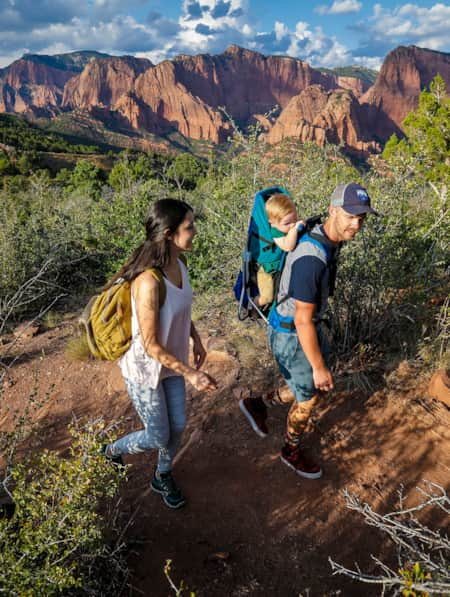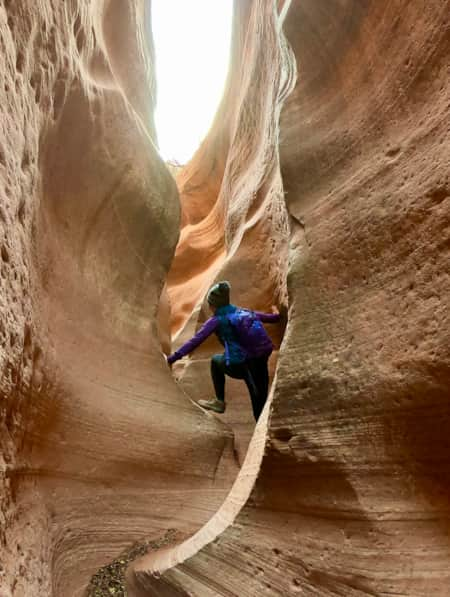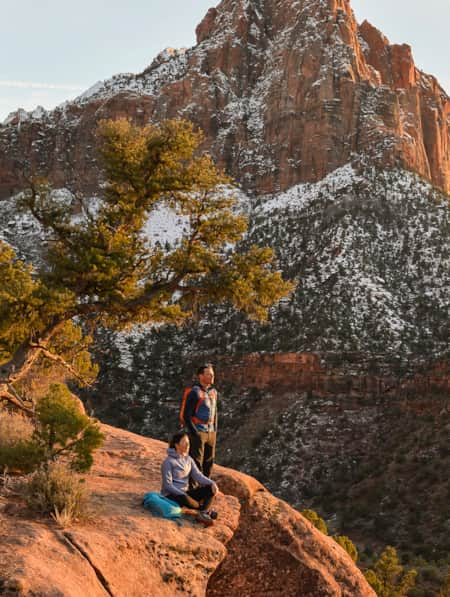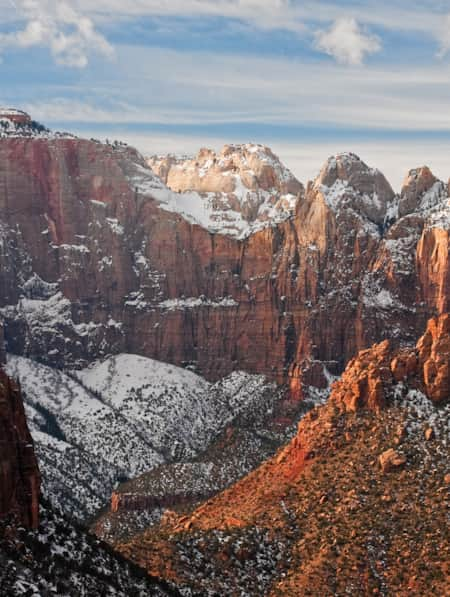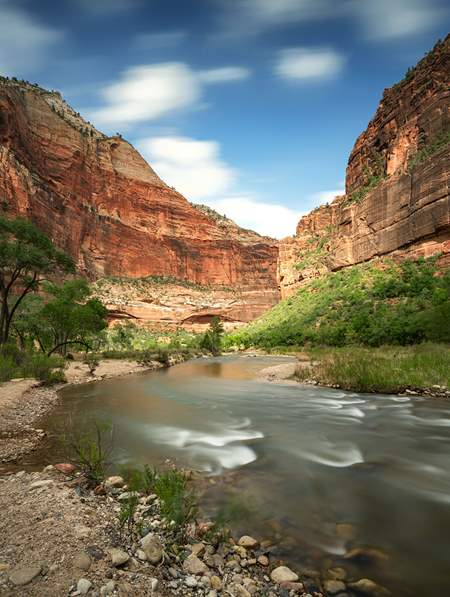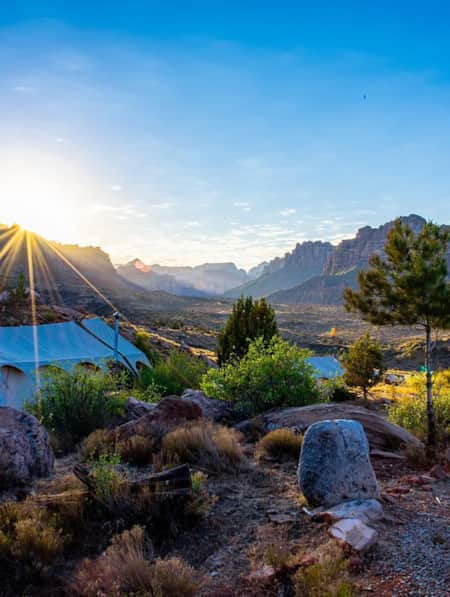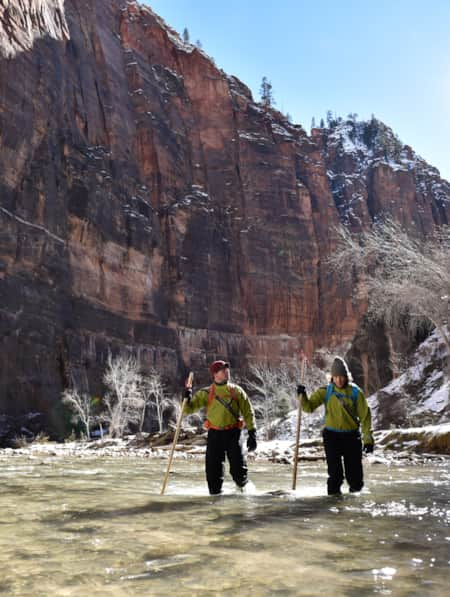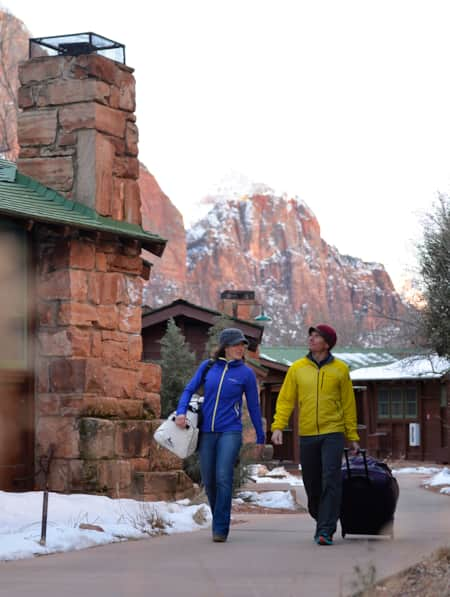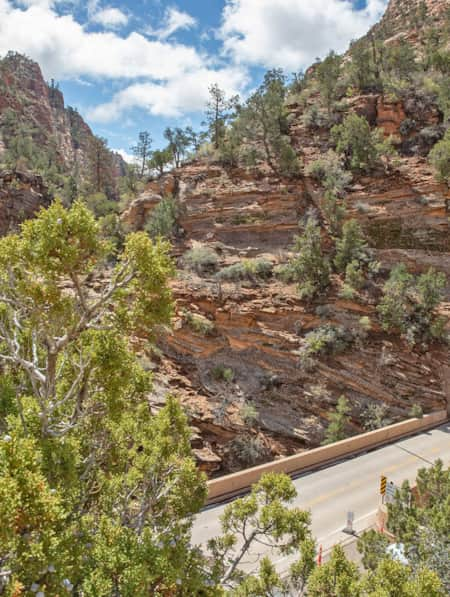Angels Landing Hike Overview
Distance: 5.4 miles round-trip
Hiking time: 2-4 hours
Best season: Early spring to middle autumn. Hiking permit required beginning April 1, 2022.
Difficulty: Strenuous
Hazards: Cliff exposure; can be slippery and dangerous when wet. The Angels Landing hike is not recommended for young children.
Pets: Not allowed
Finding the trailhead: The trail begins at the Grotto Trailhead, 0.6 miles beyond Zion Lodge on Zion Canyon Road (accessed via the tram).
Trailhead GPS: 37.259070, -112.951006
Shuttle Stop: The Grotto
Hiking Information
Beginning April 1, 2022, anyone hiking Angels Landing will require a permit. The National Park Service will issue permits by online lottery. The first lottery will open on January 3, 2022. Learn when and how to enter at go.nps.gov/AngelsLanding.
Hiking along a gutsy trail with high exposure is what makes Angels Landing so amazing — and for some, a daunting proposition. You don't need to have super-human nerves of steel (though it helps), but even confident hikers will need to stay vigilant throughout the hike. With careful, deliberate footing, hikers will be rewarded with memorable, vast vistas of Zion Canyon over 1,000 vertical feet below their boots.
The adventure begins at the Grotto Trailhead and features a nice prelude to the main show.
Begin by crossing the Virgin River on a bridge — the easiest part of the day. Angels Landing starts along the well-marked West Rim Trail and gains elevation quickly to reach the elevated mouth of the aptly named Refrigerator Canyon. It then levels off as it enters the cool inner recesses of the cleft. Cool-climate plants such as bigtooth maple and white fir thrive in the shade of the canyon floor, and the vertical walls of red sandstone are pocked with grottos and overhangs.
As the path nears the head of the canyon, it begins a strenuous ascent of the east wall. A series of twenty-one switchbacks have been built cunningly into a rift in the wall here and bears the hiker upward with calf-burning efficiency. Known as “Walter’s Wiggles,” these carefully crafted stoneworks are regarded as one of the engineering marvels of the park — and, yes, they pick up a lot of elevation very quickly.
Soon after reaching the top of the switchbacks, the path makes a gradual ascent to a sandy pad called Scout Lookout, offering aerial views into Zion Canyon. It's a good turnaround point for people who lack the stomach for the final and hair-raising 500-vertical-foot push to the top of Angels Landing.
As you approach the summit, the trail follows carved-out steps along the spine of a knife-edge ridge. Heavy chains attached to the rock serve as handrails along most (but not all) of the drop-offs. Hikers must make a steep scramble to surmount the first knob, followed by an unprotected walk across a narrow saddle that is flanked by sheer drop-offs. On the Angels Landing hike, you truly get a feeling of walking on the razor’s edge. Climbing then resumes, aided by more handrails and footholds chiseled into bedrock. This is the long and final pitch you’ll follow to the grand summit.
There are no guardrails on Angels Landing's highest point, where gnarled, defiant pinyon pines grow from impossible toeholds above the dizzying void. Occupying the center of the Big Bend of Zion Canyon, the summit commands a spectacular 360-degree panorama of rugged spires and towering walls — be sure to bring your camera so you can share pictures with your friends. Highlights include the Great White Throne, Red Arch Mountain and the entrance to The Narrows.
"Angels Landing in Zion National Park is one of the most spectacular day hikes in the world. "
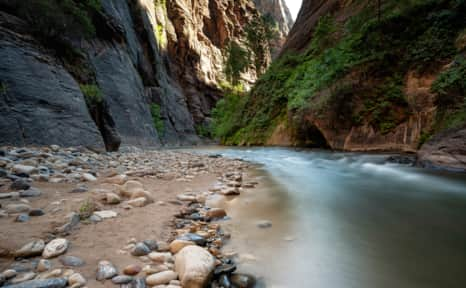
The Virgin River flows through Zion National Park.
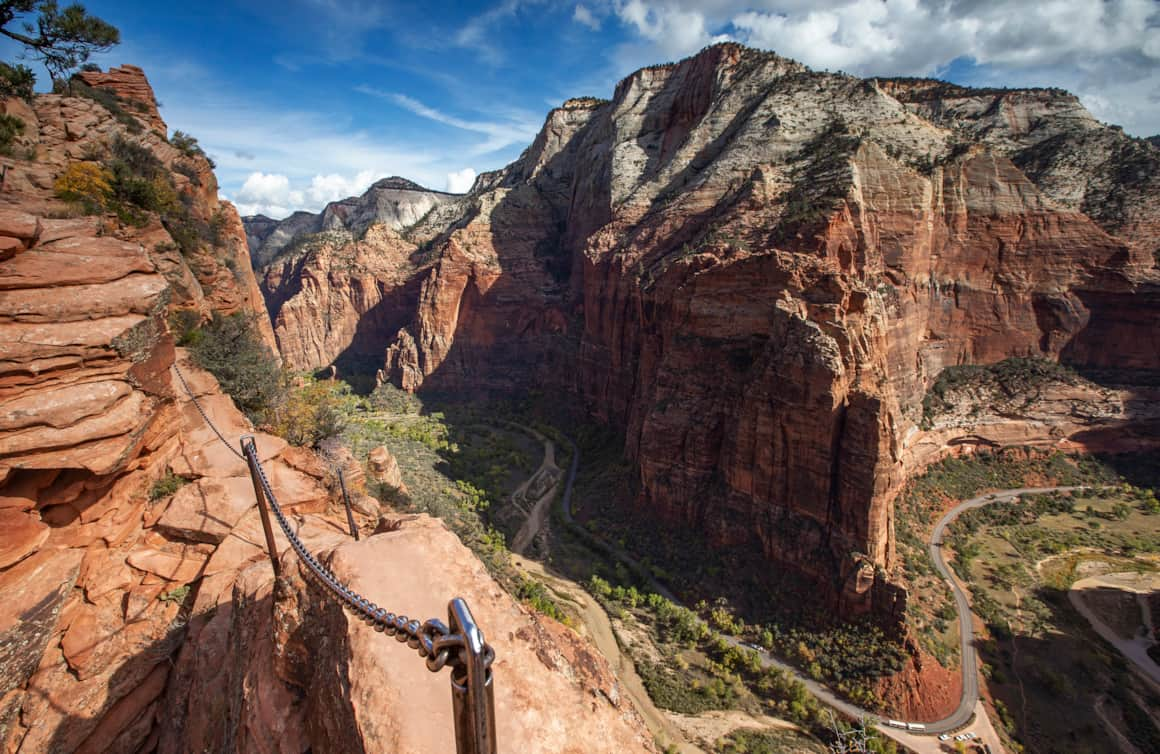
Expansive view of Zion National Park from the Angels Landing trail.
When to Hike Angels Landing
On weekends from late spring through summer, the trail often gets very crowded. Ascents can slow to a crawl and stepping aside for descending climbers can hamper the momentum of the adventure, especially in the blazing heat of the summer sun.
Shoulder seasons are the time to go, especially in early March and mid-November. There will be fewer hikers than peak season and the relentless solar radiation will have backed off. An early winter hike isn't a crazy idea, though check with rangers before heading up as Angels Landing is no place to be if coated with a slick skin of ice or snow. Sunrise and sunset hikes are perfect for photographers who want to capture the deep oranges and reds from desert sunlight.
The worst time to hike? During the busy summer season, especially on holidays like the Fourth of July. If that's when you happen to find yourself in the park, hit the trails as early as you can but expect to encounter a lot of incoming foot traffic on your descent.
Save Time with the Shuttle
Zion National Park's shuttle is a great bargain at a mere $1 per rider on recreation.gov. Reduce traffic and take the shuttle to and from the Grotto Trailhead.
Nearby Highlights and Amenities
The views of Zion Canyon from the summit are postcard-worthy — and it's fun to explore the canyon after your hike and marvel at the place where you once stood. The Emerald Pools are a nice follow-up hike and a big change of pace from the hot, sun-baked rock along Angels Landing. The namesake pools are easily accessed as the trails begin across from the historic Zion Lodge. With the name Emerald Pools you might think they are a refreshing watering hole to splash in and get cool, but these small desert oases are off limits to visitors. Please leave them clean and for the animals and insects of Zion.
The Watchman and South campgrounds are excellent basecamps for Angels Landing. Even if you aren't staying overnight, they have restrooms and adjacent day-use areas that are a good place to relax after the big hike.
